From Freedom to Censorship [How radicalized ideals enforced through violence affect society: an account of the Iranian Islamic revolution.]
People are unique in that we are each individuals with an exclusive front row ticket to the theatre of our own lives in which we are also the star of the show.
Every person experiences their lives differently than the next. While we are similar in many aspects, such as the fact that we each have certain senses, the way that we perceive through these similarities is particular to the individual cognition, in that we each participate in a different mental world. This individuality that creates each person gives rise to what we know as self-expression. At times people may become drawn to expressions and ideals which are congruent with one another, creating a bond through their likeness. These bonds are able to stimulate wonderful amounts of growth for a community, but there is always the possibility that this force may become potentially destructive. When ideals become radicalized and the community behind it stands as an oppressive force, not only does self-expression deteriorate widely, but education suffers equally devastating blows.
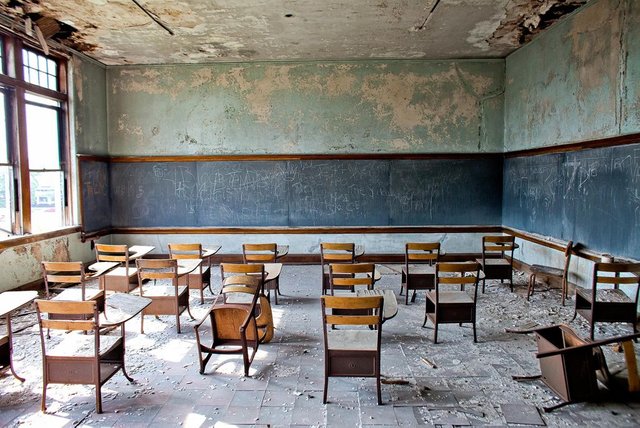
Source
Freedom began from Turmoil
After being occupied by Allied Forces in World War II, a time of political freedom ensued as the troops forcibly removed Reza Shah in 1941, the authoritarian ruler of Iran at the time. This new political freedom allowed for many new political parties to develop and flourish (Amineh and Eisenstadt 130). Economic and social crisis also began to thrive in Iran due to the occupation of the Allied Forces. The socioeconomic unrest strengthened political parties giving rise to political crisis which marked the times from 1941 to 1953. “This period ended with the United States (US)-backed military coup in 1953 against the nationalist government of Mohammad Mosaddeq and with the suppression of oppositional social forces (131).” After the coup, with the economic and financial support of the US, Mohammad Reza Shah took control of the country as the next authoritarian state ruler and initiated the beginnings of industrialization (131).
The Shah attempted to strengthen his power by creating an alliance with the large landowners and the ulama, while paying no mind to the traditional social forces. Modernization jeopardized the needs of the traditional forces which in the end brought upon confrontation between the Shah and these groups. The initiation of this regime and the intense complete modernization from the top down became known as the “White Revolution” and later as the “Revolution of the Shah and the people.” This “White Revolution”, supported by the US and “was accompanied by an intensive secular nationalist, anti-Islamic propaganda, resulted in an antagonism between the ulama and the state (Amineh and Eisenstadt 131).”
The doctrines of the White revolution affected each of the social forces causing each of them to react. Particularly these doctrines significantly affected the ulama, large landowners, and the bazaar, which caused them to unite and organize under the National Front. The land reform policies threatened landlordism. The ulama felt as though their influence was crippled through modernization and women's right to vote. The traditional economic sector, the bazaar, felt as thought the reforms would interfere in their daily commercial activities, threatening the autonomy of the bazaar (Amineh and Eisenstadt 131). This civil unrest led to bloody revolts where the military was forced to step in by the Shah. In 1978, millions of Iranian citizens, under the guide of the ulama (Islamic Clergy), demonstrated against the secular authoritarian rule of the Shah.
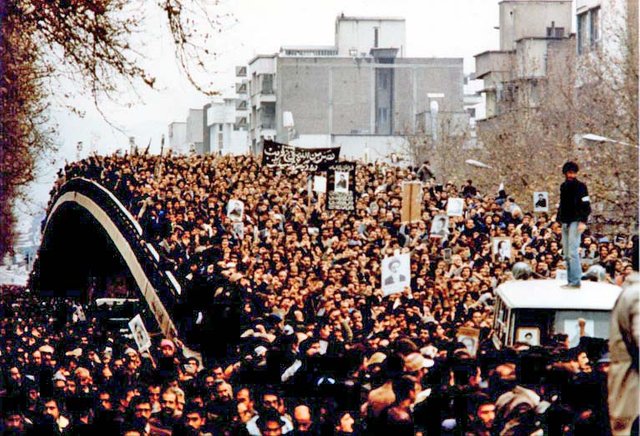
Source
Demands were Made, Promises were Broken
The revolutionaries demanded a better economic life for the majority of society, and a parliamentary democracy. They aspired for a more Islamic and more spiritual society. Due to their dissatisfaction with the Shah's regime and their cultural disposition, the revolutionaries demanded that a new regime be installed and named it the Islamic Republic (JALAEIPOUR 210).
Since the revolution of 1979 and the installation of the Islamic regime in Iran, one would be lead to believe that the religious behaviors of the country would be strengthened, that there would be an increase in participation in religious activities. According to data published in 2001 by the Ministry of Culture and Islamic Guidance, the views and beliefs of Iranians in regards to religion have not changed, but rather their engagement in religious activities has significantly weakened. The anticipation was that prayer lines would become larger after the revolution, when in reality empty benches are being filled by people who are bused in from outside of the city. Where in countries like Turkey, which have not had an Islamic revolution, the mosques are always busy and full (JALAEIPOUR 212). Perhaps this may be in direct relation with the forced views of the state, making the decision to practice religion no longer a choice of self-expression?
Women were Seen to be Pertinent Political Assets
While there have been many achievements for the equality of women in Iran, such as having several women appointed as ministers and ambassadors, women continue to face public discrimination in many different ways. In “Reading Lolita in Tehran” Azar Nafisi writes, “In the course of nearly two decades, the streets had been turned into a war zone, where young women who disobey the rules are hurled into patrol cars, taken to jail, flogged, fined, forced to was the toilets and humiliated- (503).” Many irrational rules and laws were created in order to force women into a subservient position and to placate their moral, disrupting any chances of women organizing against the unnecessary violence and fighting back.
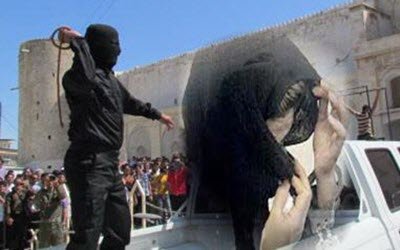
Source
The presence of women in the daily demonstrations against the Shah showed that their participation held a potentially massive influence. The Islamic supporters believed that women should play an active role in political activities of Iran (Farzaneh 217). On the contrary, religious laws were put back in place and women's rights were some of the first to be sacrificed during the early years of the Islamic revolution. Restoration of the mandatory hijab (the proper Islamic attire), a ban on women singers, and a ban on women judges were but only a few of the initial attacks on women's rights in the revolution's infancy.
The Destruction of Art
Since the revolution was one of Islamic background, it is only natural that the educational system would be affected by its influence. Islamic teachings reconstructed the general education system, as well as the arts instructions. Under the Islamic regime in Iran, the purpose of the art's educational courses is to better understand the meaning behind the manifestations of life as beautiful works of art by God. Art is taught as a means of appreciating the beauty of God in the every day world. Generally speaking, education is taught as a means of becoming closer to God; a way that the pupil may know God in a more whole manner (Rezaei 53). There are Islamic text which have forbidden certain arts which lead to the prohibition of specific arts such as poetry, music, and sculpting, though there are those who argue that this is a misunderstanding of the text. As a result, art is largely excluded from all of the educational curriculum in Iran (54).
Conclusion
In Iran, art has been almost totally forbidden in the educational system, and women are expected to dress and act in a specific manner while in public or be faced with severe punishment. Being forced to submit to the radicalized ideals of a regime that threatens violence it is obvious that self-expression and education suffer dramatically. Without access to the proper knowledge of expression, and the ability to practice without fear of repercussion, society as a whole begins to struggle and suffer. Creativity is stifled, and new ideas are not allowed to flourish into their infinite possibilities.
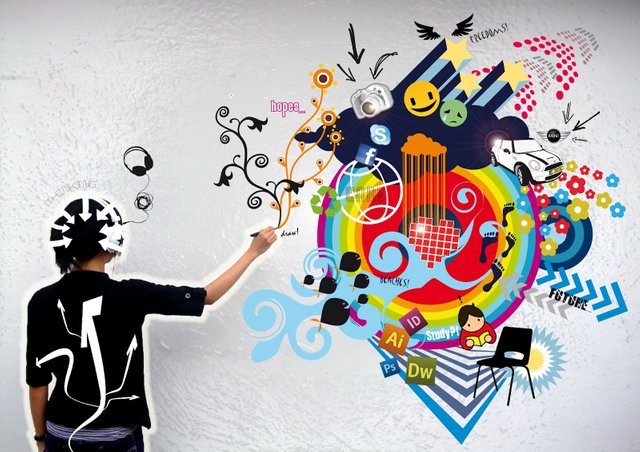
Source
Works Cited
Amineh, M. P., and Eisenstadt, S. N. “Perspectives on Global Development & Technology.” 2007, Vol. 6 Issue 1-3, pp. 129-157.
Farzaneh, Delaram. “One Step Forward, Two Steps Back: A Brief History of Legal Discriminations Against Women in Iran and the Violations of International Human Rights.” Annual Survey of International & Comparative Law, March 1, 2014, Vol. 20 Issue 1, Article 12, pp. 200-237.
Jalaeipour, Hamidreza. “Iran's Islamic Revolution: Achievements and Failures.” Critique: Critical Middle Eastern Studies. Fall 2006, Vol 15 Issue 3, pp. 207-215.
Nafisi, Azar. Reading Lolita in Tehran. The Writer's Presence, edited by Donald Mcquade and Robert Atwan, 8th edition, Bedford/St. Martin's, 2015, pp. 499-507.
Rezaei, Somaye. “Arts Education in Iran: An Interview with Khosrow Bagheri Noaparast.” Arts Education Policy Review, 2015, Vol. 116 Issue 1, pp. 51-56.
LOVELAUGHTER&&XHAOS
PALPABLE POPE Ypyskypo Skwyrl, the Y'sas
High Priest, Temple of Appled Thought
Alchemist for Trades
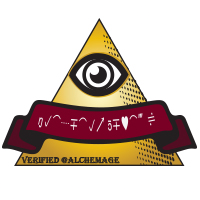
If you enjoyed this post, feel free to follow me and check out a few others!
Join us in our Minnows Unite Chat for any of your questions, chat with other members, and gain the support of other great authors.
https://steemit.chat/channel/minnowsunite
Also come by and check out Steemprentice to receive mentoring and guidance on all your Steemit needs!
https://steemit.chat/channel/steemprentice
Hello @alchemage,
It gives us pleasure to inform you that this post have been upvoted by Project Better.
The Mission of Project Better is to reward posts have many votes from Minnows but earn pennies.
Your payout is $0.021 before we vote on your post.
Learn more about the Project Better here!
We hope to see you continuing to post some great stuff on Steemit!
Good luck!
~BETTER~
@better, cheers mate! I appreciate the love and kindness!